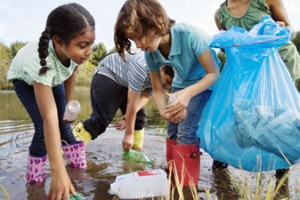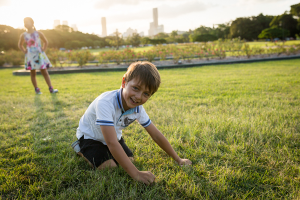 Helping Children to become resilient:
Helping Children to become resilient:
Struggle like a butterfly, succeed like the bees, bounce back like the boxer
‘Float like a butterfly, sting like a bee’….
Famous words from the world heavy weight champion boxer, Muhammad Ali. So what do a butterfly, bee and boxer have in common? RESILIENCE.
Resilience is about recovery, or the ability to bounce back from an adversity. How do we teach children to have these qualities as they grow up? Preparing your children to face disappointment, changes and challenges in everyday life is a very important aspect of parenting. Mother Nature is always a great teacher. Look at the life of the butterfly and the bee and see what you can learn from them.
Struggle like a butterfly
How beautiful is the butterfly? It is wonderful to admire their colourful wings and ability to flit from flower to flower enjoying a lovely summer’s day. However, if you look at the life cycle of the butterfly you will know that it did not arrive at its glorious stage in life without a struggle.
Parents need to realize that often it is the struggles that they allow children to face that could be the very opportunities their children need to develop character and resilience. Doing everything for your child and always picking up the pieces or making a plan so that they only experience success in every situation is not the best strategy. It might be convenient in the moment but it could also make your children feel incapable of doing things for themselves? Seeing children being carried into school for instance says – ‘I am a baby, I need to be carried’ or picking up their school bags and holding everything while the child walks free and easy gives a message of ‘I’m not responsible, I need Mum to carry my school bag.”
It is so tempting, in the desire to be the best parent, to want to provide everything. This leads to a need for immediate gratification. I want it and I get it is an attitude that is not going to help develop many positive characteristics in your child, including resilience. Look again at the butterfly:It must have been pretty frustrating being stuck in a cocoon for a couple of weeks when all you wanted to do was fly! How can you teach your child to get wings and fly?
Some suggestions to help facilitate resilience:
- Have some outdoor adventures together, go camping and struggle together with the campsite, erecting the tent, catching some fish for supper and other fun camping ideas.
- Model positive coping skills to your children and talk about how to handle difficult situations.
- Acknowledge children’s strengths and empower them to make decisions even if they make mistakes.
- Recognise weaknesses and be open to discussions on feelings.
- Go to great movies that provide a forum for a family outing followed by a discussion on the positive and negative parts of the film.

Succeed like the bees
Bees are social insects and live together in harmony with a structure and a well organised system of hardworking role models and a routine. This kind of lifestyle encourages family connection and teaching children in a safe environment.
There is law and order and routine in a beehive. Everyone knows their place and their value. Communication is important and every little bee is positive about their contribution to the hive. Human parents can also encourage their children to have a good work ethic and nurture a positive self-image. Set realistic attainable goals and be available to talk about how to help each other in different situations. When you have feelings of self-worth and positive coping skills you can stand firm in the face of adversity and be more resilient.
How do you encourage the bee syndrome at home?
Here are some ideas:
- Have a routine at home that allows children to be part of the everyday responsibilities. Doing little chores around the house builds up character and family values.
- Help children have a sense of belonging so when things go wrong they have a solid foundation to fall back on.
- Make time to have family meals together and share coping skills.
- Play board games as a family and encourage healthy competition.
- Encourage friendships and fun outdoor exercise. Rough and tumble with friends is a great way to foster friendly bouts of resilience.
- Be inventive and try new things, experiment with new recipes in the kitchen or try some fun science experiments at home. Remember, they don’t always have to work! Make mistakes to learn from. The inventor Thomas Edison learnt the hard way too!! What was Edison’s attitude? He said…. ‘I haven’t failed, I have identified 10 000 ways this doesn’t work.” We build resilience in our children by letting them try and try again.
- Bounce back like a boxer:
The art of resilience, swinging with the punches, taking the knocks and getting back up again. These are some of the characteristics of the boxer in the ring. It’s not really about the boxing, but more about keeping in mind some of the attributes of a boxer and his sport when supporting our children in facing the ‘hard knocks of life’.
How to roll with the punches and bounce back:

- Keep healthy hearts, minds and bodies.
- Help children (and parents) see discipline not as punishment but opportunities for learning.
- Keep stress at a manageable level. Don’t organise every minute of the afternoon with extra activities rushing from one place to another.
- Take time out to be at home and do something creative.
- Praise courage and tenacity – lean on those ropes and then bounce back ready to face the next round with strength of character and endurance.
Winston Churchill once said…”Success is not final, failure is not fatal, it is the courage to continue that counts.”
THE FINAL COUNTDOWN : (in butterfly terms)
B. be hopeful and confident in your self-worth
U. understand your feelings
T. try new things
T. talk about your problems
E. evaluate strengths and weaknesses
R. run, jump, skip and play outdoors
F. feel special and appreciated
L. look at mistakes as challenges
Y. yes you can try, and if you don’t succeed try and try again
Remember when nothing seems to be going right – go left! (Anonymous quote)
Resilience is developed through trial and error; no experience is wasted if it is handled in the right way.
To get more tips helping children to become resilient, you can visit the Child Psychology Brisbane
References:
Generation next.com.au
Healthy children .org
Family TLCfamily.net




 We can’t always predict what is going to happen on a daily basis and life will throw challenges our way, and at our kids too! So helping our children to understand that, and experience some flexibility rather than being stuck in rigidity, teaches them that it is a positive skill to be able to adapt to changes and go with the flow and fosters resilience.
We can’t always predict what is going to happen on a daily basis and life will throw challenges our way, and at our kids too! So helping our children to understand that, and experience some flexibility rather than being stuck in rigidity, teaches them that it is a positive skill to be able to adapt to changes and go with the flow and fosters resilience.



 Encourage your child to pick at least five people then assign each person to a finger or thumb on one hand. This can help your child remember who those support people are, e.g. my teacher is my pointer finger.
Encourage your child to pick at least five people then assign each person to a finger or thumb on one hand. This can help your child remember who those support people are, e.g. my teacher is my pointer finger. Encourage your child to be a friend in order to make and keep friends. Being involved in social, sporting, cultural, school, or spiritual events and groups can also promote a child’s sense of belonging, self worth, and belief that they are surrounded by people who will support them when in need.
Encourage your child to be a friend in order to make and keep friends. Being involved in social, sporting, cultural, school, or spiritual events and groups can also promote a child’s sense of belonging, self worth, and belief that they are surrounded by people who will support them when in need.

